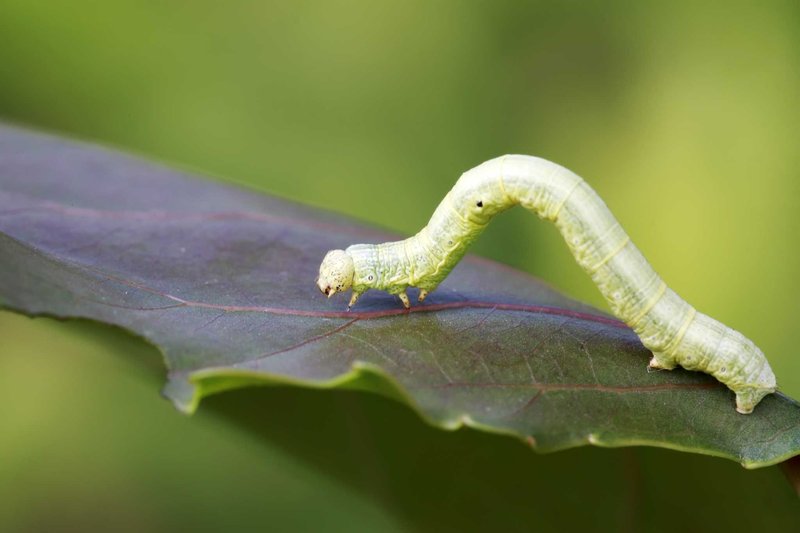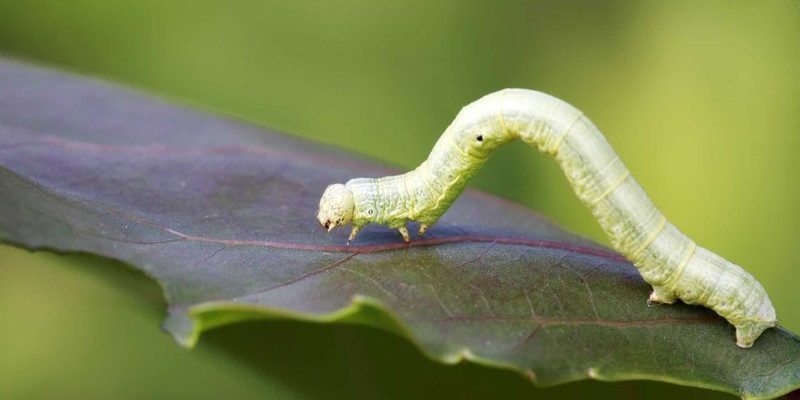
In this article, we’ll dive into the world of inchworms and explore whether they can adapt to life indoors. Along the way, we’ll uncover their natural habitats, dietary requirements, and even the conditions they need to survive. So, grab a cup of coffee, and let’s get into it!
What Are Inchworms Anyway?
Inchworms are the larval stage of various moth species, particularly those in the Geometridae family. Their name comes from the way they move—by looping their bodies and “inching” forward. These little critters can be green, brown, or even striped, providing excellent camouflage in nature.
You might spot inchworms on trees, shrubs, or even on the ground. They’re often seen munching on the leaves of their favorite plants. While they might seem harmless, they can sometimes cause damage to gardens if their populations grow too large.
So, why are they called inchworms? Well, if you watch one in action, you’ll see it stretches out and then pulls itself forward—almost like it’s performing a little dance! This movement can make you think they’re measuring out inches as they travel.
Where Do Inchworms Live Naturally?
Inchworms thrive in outdoor environments, especially in forests and gardens. They prefer areas with ample foliage where they can feed on leaves and blend into their surroundings. Think about the lush green trees in your local park; inchworms love those places!
Typically, inchworms are most active during spring and early summer when the weather is warmer and plants are plentiful. They’re mostly found on trees like oak, maple, and birch, as these provide both food and shelter. The combination of temperature, humidity, and food sources creates an ideal habitat for them.
It’s important to note that inchworms undergo metamorphosis, transforming from larvae to pupae and eventually into adult moths. This lifecycle underscores their need for a specific environment to thrive and reproduce successfully.
Can Inchworms Survive Indoors?
Here’s the thing: inchworms are not really designed for indoor life. While they might survive for a short time if accidentally brought inside, they won’t fare well in the long run. They need specific conditions—like plenty of moisture and fresh plant leaves—that are typically absent in our homes.
If an inchworm ends up indoors, it may wander around looking for something to munch on. But without access to its preferred leafy friends, it’ll struggle. In fact, trying to keep an inchworm indoors can lead to it drying out or starving, which isn’t a great situation for the little guy.
So, if you find one inching across your kitchen floor, it’s best to gently relocate it back outside where it can find food and thrive!
What Do Inchworms Eat?
Inchworms are picky eaters! Their diet mainly consists of leaves—especially those from trees. Some of their favorites include:
- Oak leaves
- Maple leaves
- Birch leaves
- And many more!
When they munch on these leaves, inchworms play a crucial role in the ecosystem by helping to keep plant populations healthy. In a garden setting, having inchworms can indicate a balanced environment, as they’re part of the food web.
It’s fascinating how much they rely on their food sources for survival. If you’re considering raising one indoors (which we don’t recommend), you’d need to provide a constant supply of fresh leaves. That’s a tall order, especially since they can eat a surprising amount for their size!
What Happens if Inchworms Get Inside?
If inchworms accidentally find their way into your home, you might notice them in unexpected places—like creeping along windowsills or hiding in the folds of curtains. While it’s cool to observe these tiny creatures up close, they don’t really belong in the indoor environment.
Without proper food and moisture, inchworms can become weak and lethargic. In no time, they may even die from starvation or dehydration. In nature, these little guys have evolved to cope with changes in temperature and moisture levels, but your living room doesn’t offer the same luxuries.
Moreover, having inchworms indoors can attract other pests. Birds, spiders, or even other insects may come looking for a meal. So, if you want to minimize a potential pest problem, it’s best to help inchworms back outside.
How to Relocate Inchworms Safely
If you find an inchworm indoors and want to help it find its way back outside, here’s a simple way to do it:
1. **Gently catch the inchworm:** Use a piece of paper or a small container to scoop it up. Be gentle to avoid harming it.
2. **Find a suitable outdoor spot:** Look for a place with plenty of trees or shrubs, ideally where the inchworm was first found.
3. **Release it carefully:** Place the inchworm on a leaf or branch, giving it a chance to grab onto something familiar.
4. **Avoid direct sunlight:** If it’s a hot day, try to find a shaded area to release it. This helps prevent overheating.
By taking these steps, you not only help the inchworm survive but also maintain the balance of your home environment.
Inchworms are cute and fascinating little creatures, but they’re best suited for life outdoors. They thrive in nature, feeding on leaves and playing an important ecological role. While it may be tempting to keep one indoors as a pet, it’s really not practical or humane.
So, the next time you see an inchworm, remember it’s not just a quirky little pest but a vital part of our ecosystem. And if you do find one inside, do the right thing: help it get back to where it belongs! With their unique movements and charming personalities, they’re much happier inching along outside among the trees.

